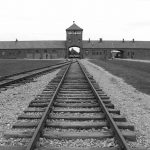The horrible things that people did to each other during WWII are made clear at Auschwitz-Birkenau. This page will talk about the history of Auschwitz’s first concentration camp. In order to keep past from happening again, it’s important to remember what took place there.
The Terrible Story of Auschwitz I
The first part of what would become the biggest Nazi death camp and prison camp is called KL Auschwitz. Politicians were first locked up there, but it quickly turned into a death camp for Jews, Poles, and other Nazi enemies. The gas chambers and crematoria at Auschwitz I were the first steps toward mass murder and the effectiveness of the Nazi genocide. Even though the camp was freed in 1945, the Auschwitz monument honors the nearly a million people who died there. Auschwitz I is not just a Polish warning against racism and intolerance; it is a world threat.
KL Auschwitz and Auschwitz II-Birkenau Are Not the Same
To understand the crimes of the Holocaust, you need to know the difference between KL Auschwitz and Auschwitz II-Birkenau. KL Auschwitz, which is also called the „Main Camp,” started out as a place to hold political prisoners before it turned into a horrible place. Auschwitz II-Birkenau, on the other hand, was built by the Nazis to be a prison and death camp for Jews as part of the Final Solution. With the addition of Birkenau to Auschwitz I, the Nazis’ planned killing of Jews grew worse. Auschwitz I had executive buildings and was the site of many crimes. However, Auschwitz II-Birkenau, with its gas chambers and crematoriums, became the name of the Holocaust. Both camps and the many sub-camps of Auschwitz were the biggest and most well-known Nazi death and concentration camps. They had a long impact on Polish history and the Holocaust.
How the Holocaust Affected the Jews at Auschwitz
Auschwitz is a symbol of how terrible things were for the Jews during the Holocaust. The way the Nazis planned the Holocaust is shown by how Auschwitz went from being a Polish army barracks to a death and concentration camp. Mass murder rose sharply at Auschwitz I and Auschwitz II-Birkenau, marking a terrible turning point in the Final Solution. European Jews were sent to Auschwitz, where they were made to work, were used in medical experiments, and were killed in gas chambers. The fact that Auschwitz III and other subcamps got worse shows how determined the Third Reich was to kill all Jews. The horrible deaths and suffering of Jewish prisoners at Auschwitz show how cruel the Nazis were, and they make it clear that we need to remember and learn from the past.
Looking into the link between Krakow and Auschwitz
The fact that Krakow is close to Auschwitz-Birkenau is important for understanding the Holocaust and how it hurt Jews and Polish society. The biggest Nazi death camp during WWII was Auschwitz, which was 70 km from Krakow and close to Oświęcim. Because it was so close, Krakow, a major Jewish city, was affected right away by the Final Solution. A lot of Jews from Krakow were sent to Auschwitz I and Birkenau (Auschwitz II), where they were horribly mistreated. Being close to Auschwitz reminds people of the historical and cultural scars that the Nazis’ killing of Jews left on the city. This link stresses remembering and learning from the past in order to stop similar horrible acts from happening again.
Remembering the Victims of Auschwitz I
The story of the Auschwitz Concentration Camp is incomplete without talking about the people who died there. When thinking about Auschwitz’s mindset, it’s important to remember the stories of the people who died there. It’s important to remember the disasters and learn from them, and each name and life story does that. Auschwitz I was the center of the Nazis’ concentration and death camps, showing how well the Holocaust was planned. The preservation of Auschwitz I and Auschwitz II-Birkenau gives people today and tomorrow a visual link to the past. This makes sure that the lessons learned from this sad part of history will last and continue to warn against hate, intolerance, and prejudice.
How Auschwitz Changed from a Concentration Camp to an Extermination Complex
The sad history of the Holocaust can be seen in how Auschwitz changed from a single concentration camp to a huge death and work camp. Auschwitz began in 1940 in Oświęcim, Poland. It quickly grew to include Auschwitz II-Birkenau, Auschwitz III-Monowitz (Buna), and more than 50 smaller camps where people were made to work or were killed. This rise was a result of the Nazis’ move toward the Final Solution in 1942, which aimed to kill all Jews in controlled Europe. The fact that Auschwitz II-Birkenau was built in 1941 to kill a lot of people showed how important the camp was to the Holocaust. Around 900,000 Jews were sentenced for death at Auschwitz-Birkenau, which was the biggest death camp by 1944. The Nazis carefully planned the facilities of Auschwitz-Birkenau so that they could kill millions of people. At the camp, a lot of people were killed and buried in gas chambers and crematoria. Many prisoners were sent to their deaths during the selection process when they got to the camp from the ship. For now, those who were saved had to work in situations that were cruel and harmful. As the camp grew, it included SS workshops and factories, like Monowitz’s synthetic rubber factory, where prisoners were made to work as slaves to help the Germans win the war. The Canada supply warehouses, where the things that dead prisoners left behind were processed and kept, show how cruel and efficient Auschwitz was on purpose. The fact that Auschwitz was turned into a complex network of camps shows how cruel the Nazis were and how they killed Jews and other unwanted groups on purpose.
FAQs
How large a part did Auschwitz II-Birkenau play in the Holocaust?
Auschwitz II-Birkenau was an important part of the Holocaust because it was where most of the killing took place. Birkenau was built in 1941 as part of the expansion of Auschwitz. Its purpose was to kill Jews and other unwanted people. One million Jews were killed in Birkenau’s gas chambers and crematoriums, making it the worst concentration camp. The design of Auschwitz II-Birkenau made it possible for the Nazis to carry out their murderous plans. It is a haunting reminder of the Holocaust.
What did Krakow have to do with Auschwitz I?
Krakow was important during the Holocaust because it was close to Auschwitz (70 km) and had a lot of history. Before the war, there were a lot of Jews living in Krakow. During the Nazi occupation, however, the city was used to move Jews to Auschwitz, especially Auschwitz II-Birkenau, where they were killed. The Nazis used the Krakow Ghetto and the Plaszow work camp in the city to hurt and kill Jews. The fact that Krakow is close to Auschwitz makes the terrible effects of the Holocaust on both Jews and Poles even more clear.
How many people died at KL Auschwitz?
About 1.1 million people were killed at Auschwitz during the years it was open. Auschwitz was the main place where Jews died in the Holocaust; 90% of the victims died there. People from Poland, Romania, the Soviet Union, and other groups disliked by the Nazis were murdered on the daily. The huge number of dead at Auschwitz shows how big the Nazi Holocaust was and how terrible it was for people.



